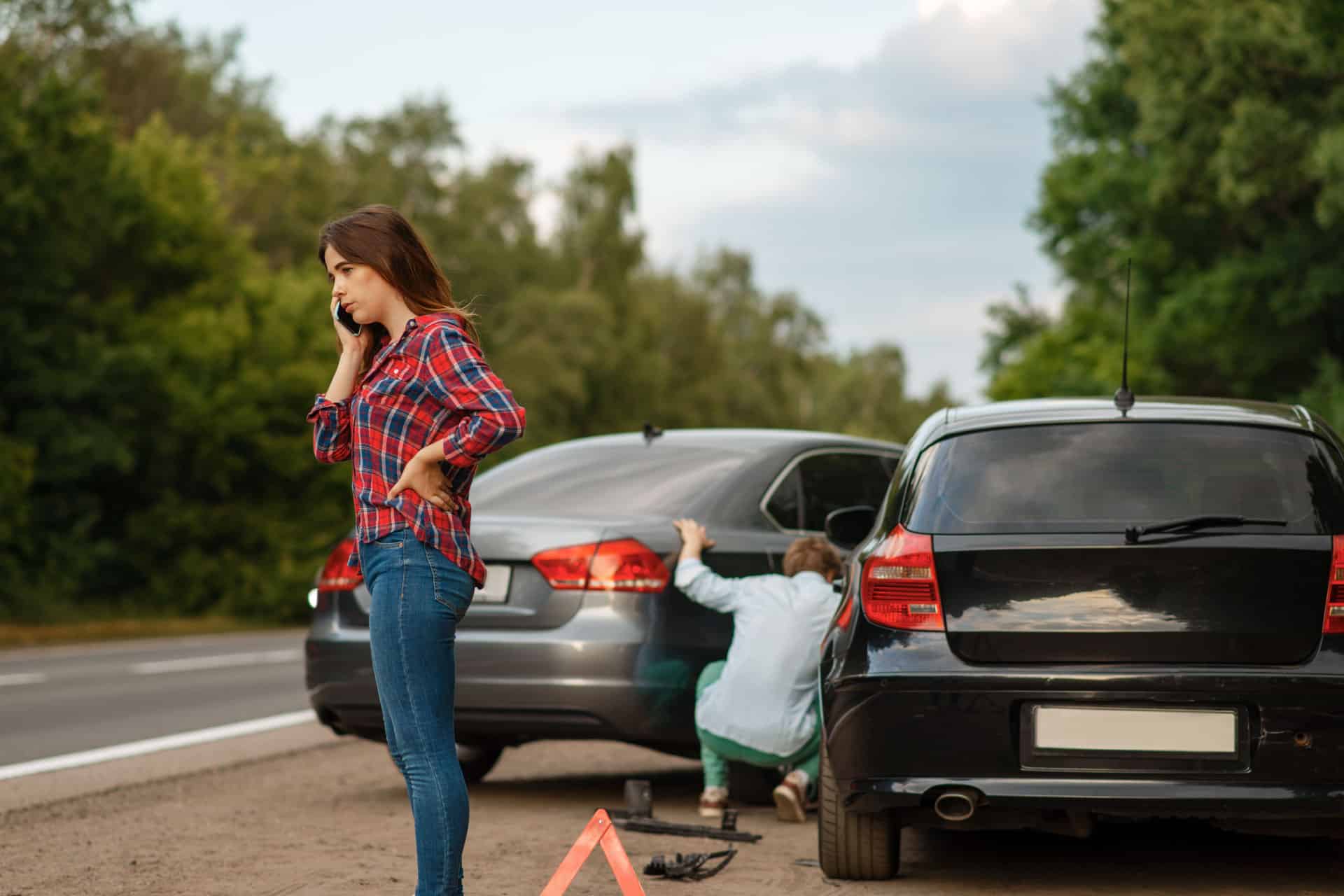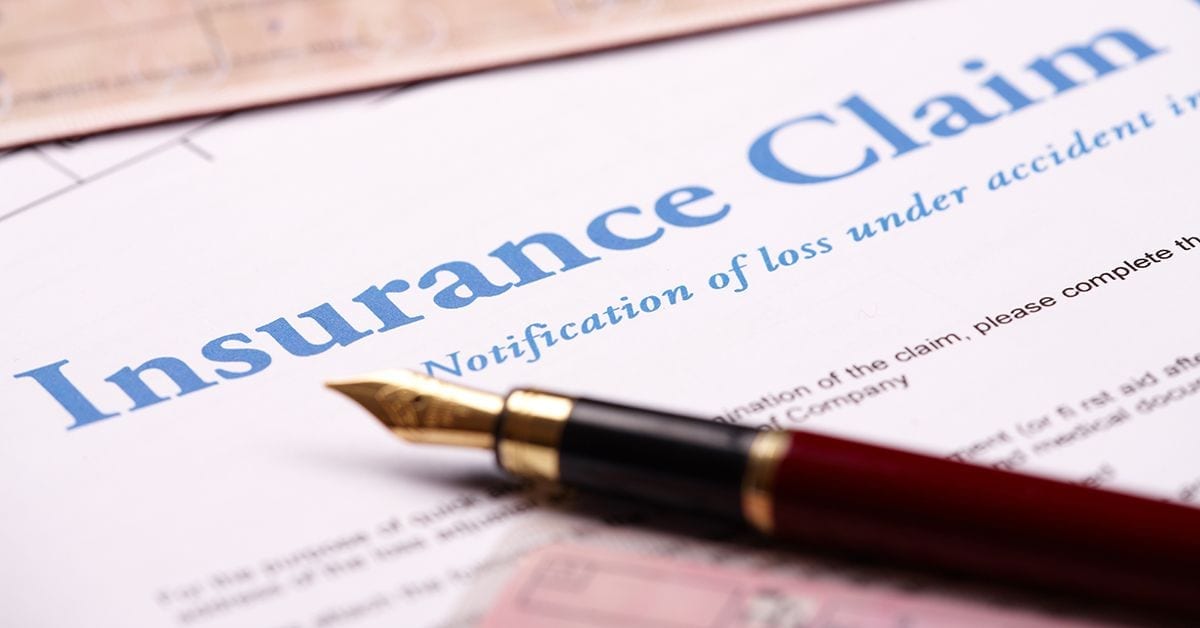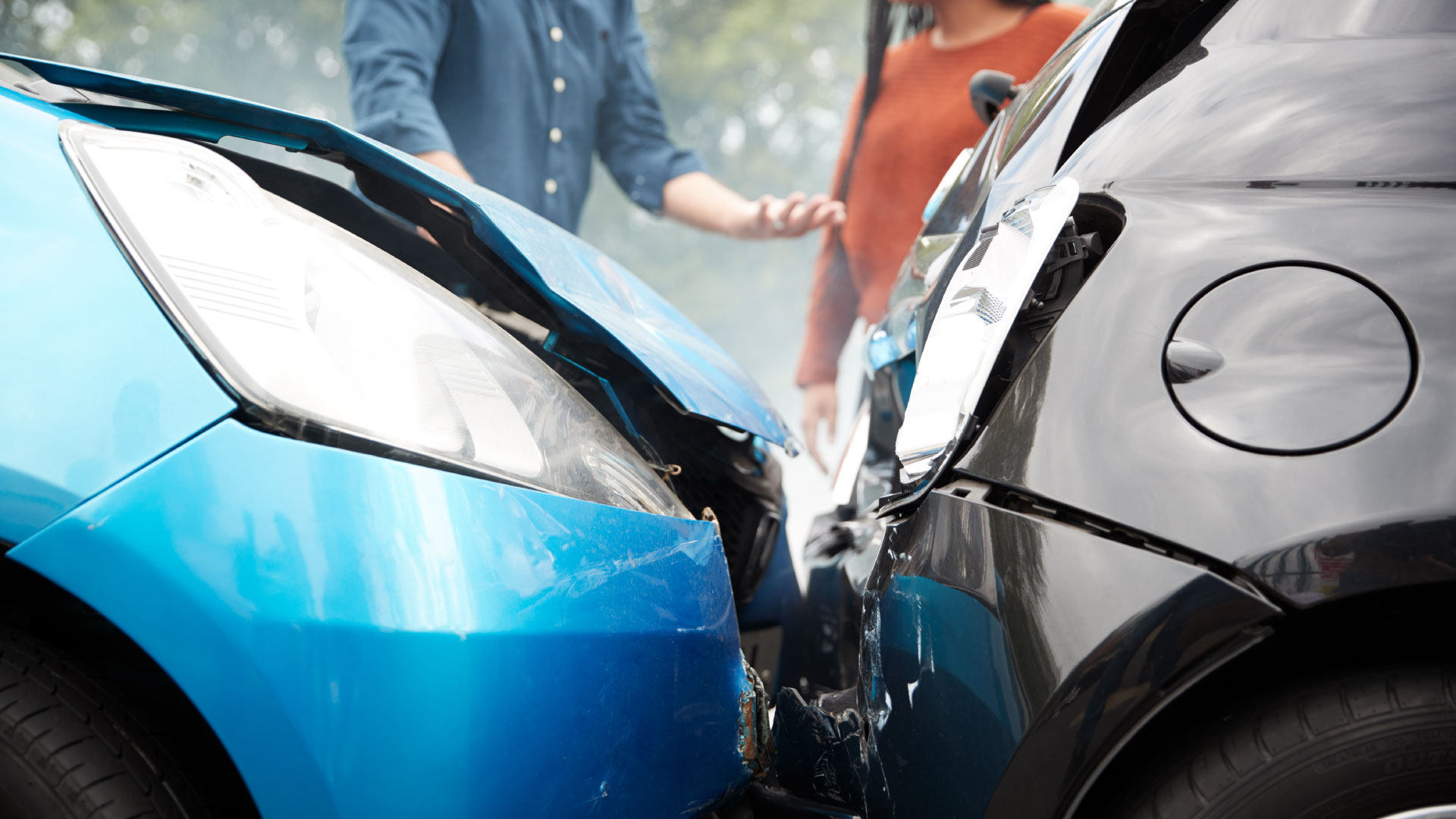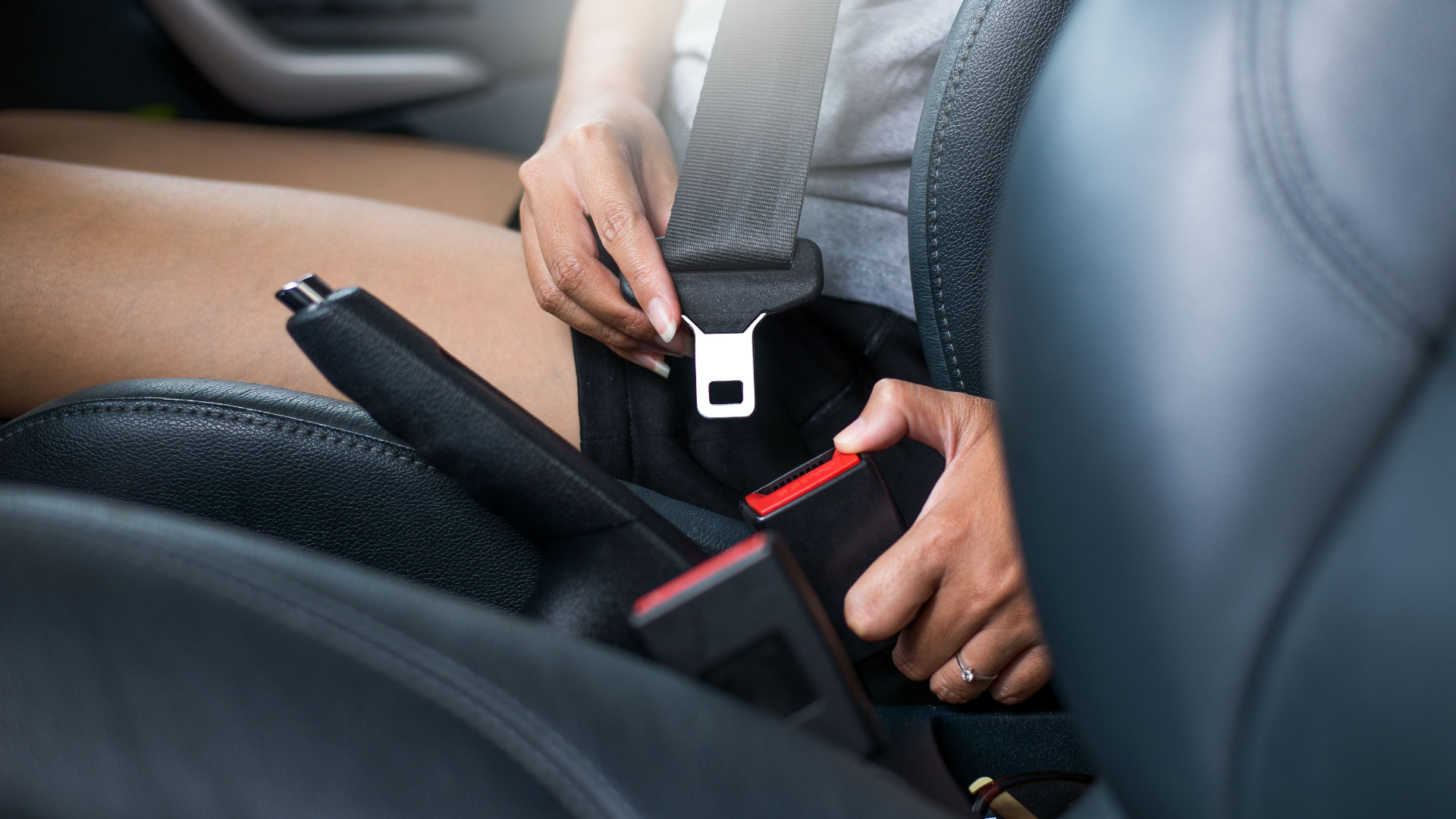Who Is at Fault in Multi-Car Accidents in Georgia?
When multiple vehicles are involved in an accident, determining who’s responsible becomes significantly more complex than in a typical two-car collision. An experienced car accident lawyer can help you understand who’s at fault in your case and potentially help you recover (even if you’re partially at fault).
Georgia follows a modified comparative negligence system, which means that you can recover as long as you’re less than 50% to blame for the accident. Neighboring South Carolina follows a similar approach, allowing recovery when you’re 50% or less responsible for the accident.
For residents of the Augusta area who travel between Georgia and South Carolina or frequently commute in either state, understanding these differences is crucial. At M. Austin Jackson Injury Lawyers, our experience handling cases in both states provides valuable insight for accidents that occur near state borders or involve drivers from both states.
Keep reading to learn more about determining fault in the Augusta area or, if you’ve been in an accident, reach out to us for a free consultation!
Understanding Liability in Multi-Vehicle Accidents
Before diving into the specifics of multi-car scenarios, it’s important to understand the fundamental legal principles that apply to these cases in both Georgia and South Carolina.
Most car accident cases are built on the legal concept of “negligence.” In legal terms, negligence occurs when:
- A driver owed a duty of care to others on the road
- That driver breached this duty by failing to drive safely
- The breach directly caused an accident
- The accident resulted in damages or injuries
In both Georgia and South Carolina, all drivers have a legal responsibility to operate their vehicles with reasonable care. When a driver fails to meet this standard—whether by speeding, texting while driving, or failing to maintain a safe distance—they may be considered negligent.
The key difference between the states emerges when multiple parties share fault. Georgia’s approach may completely bar recovery if you’re 50% or more at fault, while South Carolina allows recovery at exactly 50% fault but bars it at 51% or higher.
Common Types of Multi-Car Accidents
Multi-vehicle accidents typically fall into several categories, each with unique liability considerations. Understanding these patterns helps determine who bears responsibility.
Chain-Reaction Rear-End Collisions
These accidents occur when one vehicle rear-ends another, pushing it into one or more vehicles ahead. While the traditional rule that “the rear driver is at fault” provides a starting point, reality is often more nuanced.
In a simple three-car scenario, the driver at the back might bear full responsibility. However, if the middle driver was following too closely, stopped suddenly without cause, or had non-functioning brake lights, liability might be shared between multiple drivers.
Georgia courts carefully analyze the sequence of impacts to determine whether the middle car was pushed into the front vehicle by the rear impact or if the middle car hit the front vehicle before being struck from behind. This distinction can significantly impact fault distribution.
No matter your role in the accident, our skilled car accident attorneys will gather evidence to build the strongest possible case on your behalf, making good use of our local knowledge and expertise.
Intersection Pile-Ups
Accidents at intersections often involve multiple vehicles and complex questions of right-of-way. These crashes can occur when:
- A driver runs a red light or stop sign
- Someone makes an improper left turn
- A driver fails to yield when required
- Multiple drivers misinterpret four-way stops
Determining fault in these scenarios often requires thorough investigation of traffic signals, right-of-way rules, and the precise sequence of events. In Georgia and South Carolina, the driver who failed to obey traffic signals typically bears primary responsibility, but other factors may distribute fault among multiple parties.
Highway Accidents and Pile-Ups
High-speed, multi-vehicle collisions on highways represent some of the most devastating and complex accident scenarios. These often result from:
- Initial dangerous driving by one motorist (speeding, unsafe lane changes)
- Adverse weather conditions like fog or ice
- Sudden traffic slowdowns
- Road construction or debris
The challenge in these cases lies in determining which drivers were following too closely, which were traveling at unsafe speeds for conditions, and which were simply unavoidable victims of the chain reaction. Often, the blame falls primarily on the driver who initiated the sequence, but following drivers who failed to maintain safe distances may share responsibility.
Comparative Negligence: Georgia vs. South Carolina
Both Georgia and South Carolina use comparative negligence systems, but with important differences that can significantly impact your ability to recover damages.
Georgia’s Approach to Modified Comparative Negligence
Georgia follows a 49% bar rule, meaning:
- You can recover damages if you’re 49% or less at fault
- Your compensation is reduced by your percentage of fault
- You cannot recover if you’re 50% or more responsible
For example, if you suffer $100,000 in damages in a multi-car crash and are found 30% at fault, you could recover $70,000. However, if you’re determined to be 50% at fault, you would recover nothing under Georgia law.
South Carolina’s Comparative Negligence Approach
South Carolina applies a slightly more forgiving 50% bar rule:
- You can recover damages if you’re 50% or less at fault
- Your compensation is reduced by your percentage of fault
- You cannot recover if you’re 51% or more responsible
This small difference can be crucial in close cases. Using the same example, if you’re found exactly 50% at fault for a multi-car accident in South Carolina, you could still recover $50,000 of your $100,000 in damages—whereas in Georgia, you would receive nothing.
Cross-Border Considerations
For accidents that occur near the Georgia-South Carolina border, determining which state’s laws apply becomes a critical first step. Generally, the applicable law is determined by where the accident occurred, not where the drivers live or where any lawsuit is filed.
This means an Augusta resident involved in a multi-car pile up just across the state line in South Carolina would have his or her case governed by South Carolina’s comparative negligence rules, potentially affecting that person’s ability to recover damages.
Evidence Used to Determine Fault
Establishing who bears responsibility in multi-vehicle accidents requires thorough evidence collection and analysis. The following types of evidence prove particularly valuable:
Physical Evidence
- Vehicle damage patterns showing points of impact and collision sequence
- Skid mark length and direction indicating braking attempts
- Road conditions and visibility factors at the time of the accident
- Position of vehicles after the collision
Thorough documentation of the accident scene is essential. In Georgia and South Carolina, police officers typically create detailed accident reports, which can make or break your case in a multi-car collision. However, we can engage accident reconstruction specialists if a case demands it; sometimes, the reports generated by these experts differ with accident reports drafted by investigating law enforcement.
Witness Testimony
Eyewitness accounts can provide crucial perspectives on how a multiple vehicle accident unfolded. Effective witness testimony includes:
- Observations about vehicle speeds before impact
- Identification of which drivers made unsafe maneuvers
- Information about traffic signal status at the time of collision
- Details about the sequence of impacts
In both Georgia and South Carolina, independent witness statements carry significant weight, especially when they come from individuals with no connection to any involved parties. After an accident, if possible, be sure to gather the names and contact information of any witnesses, as well as any notes they might provide on what they saw.
Electronic Evidence
Modern vehicles and our technology-rich environment provide valuable digital evidence:
- Traffic camera footage capturing the accident
- Dashcam recordings from involved vehicles or witnesses
- Data from vehicle event data recorders (EDRs)
- Timestamped cell phone records if distracted driving is suspected
- Videos from bystanders (oftentimes posted to social media platforms)
For cross-border cases, it’s important to note that Georgia and South Carolina may have different protocols for obtaining and preserving such evidence. At M. Austin Jackson Injury Lawyers, we understand these differences and work to secure all available evidence regardless of which state’s laws apply.
The Role of Insurance Companies
When multiple vehicles are involved in an accident, multiple insurance companies enter the picture, each with their own interests to protect.
In both Georgia and South Carolina, insurance adjusters conduct their own investigations to determine fault percentages. These investigations typically include reviewing police reports, interviewing drivers and witnesses, examining vehicle damage, and sometimes bringing in accident reconstruction specialists.
Insurance companies often attempt to shift blame to other drivers—or to you—to minimize their financial responsibility. This challenge becomes particularly complex in multi-vehicle scenarios where several insurers may point fingers at each other.
When accidents occur near the Georgia-South Carolina border or involve drivers from both states, additional complexity arises from different insurance requirements and fault systems. Georgia requires minimum liability coverage of $25,000 per person and $50,000 per accident for bodily injury, while South Carolina requires $25,000/$50,000 for bodily injury plus $25,000 for property damage.
Working with an attorney familiar with both states’ insurance regulations can help you navigate these complexities and prevent insurance companies from unfairly minimizing your compensation.
Steps to Take After a Multi-Car Accident
The actions you take immediately following a multi-vehicle accident can significantly impact your ability to establish fault and secure fair compensation. Consider these important steps:
- Ensure safety first. Move to a safe location if possible and check for injuries.
- Call 911. Report the accident and request emergency medical services if needed.
- Document the scene. Take photos of all vehicles, their positions, damage, license plates, and the overall accident scene.
- Gather information. Exchange contact and insurance details with all drivers involved, not just the one you believe caused the accident.
- Identify witnesses. Collect contact information from anyone who observed the accident.
- Seek medical attention. Even if injuries seem minor, get evaluated by a healthcare professional. Whether your injuries are minor or severe, sticking to a professional treatment plan will help your recovery—physically, mentally, and financially.
- Report to your insurance. Notify your insurance company about the accident promptly.
- Avoid discussing fault. Do not admit fault or make statements about what caused the accident.
In Georgia, you must report accidents resulting in injury, death, or property damage exceeding $500. Similarly, South Carolina requires reporting accidents with injuries, deaths, or property damage of $1,000 or more.
Remember that the statute of limitations for filing a lawsuit is two years for injury claims in Georgia and three years in South Carolina. However, it’s best to begin the legal process much sooner while evidence is fresh and witnesses’ memories are clear.
Get Experienced Legal Help For Your Multi-Car Accident
At M. Austin Jackson Injury Lawyers, we bring extensive experience in handling complex multi-vehicle accident cases throughout the Augusta area. Our team understands the nuanced differences between each state’s laws and how they affect your case.
We work diligently to:
- Conduct thorough independent investigations of multi-car accidents
- Consult with accident reconstruction experts when necessary
- Gather and preserve all available evidence of fault
- Negotiate with multiple insurance companies on your behalf
- Apply the appropriate state laws to maximize your recovery
- Represent your interests in court if a fair settlement cannot be reached
Our deep roots in the Augusta community, combined with our expertise in both Georgia and South Carolina personal injury law, make us uniquely qualified to handle cases that cross state lines or involve drivers from both states.
If you’ve been injured in a multi-car accident, contact M. Austin Jackson Injury Lawyers for a free, no-obligation consultation. We’ll review your case, explain your legal options, and help you understand the best path forward!
Frequently Asked Questions
What if I’m partially at fault in a multi-car accident?
In Georgia, you can recover damages if you’re less than 50% at fault, though your compensation will be reduced by your percentage of responsibility. In South Carolina, you can recover if you’re 50% or less at fault, with similar reductions. Our team can help evaluate your level of potential fault and develop strategies to maximize your recovery.
How do Georgia and South Carolina laws differ for multi-car accidents?
The primary difference lies in their comparative negligence rules. Georgia prevents recovery at 50% fault, while South Carolina allows recovery at exactly 50% fault but bars it at 51%. Additionally, each state has different insurance requirements, reporting procedures, and statutes of limitations. Typically, you have two years to file a car accident claim in Georgia and three years in South Carolina.
Who pays for my damages if multiple drivers share fault?
Each at-fault driver’s insurance typically pays according to their percentage of responsibility. For example, if two drivers are each 50% responsible for your injuries, you would pursue claims against both of their insurance companies for their respective shares of your damages.
What if my accident happened on the state border?
The laws of the state where the accident physically occurred generally apply, regardless of where the drivers live. For accidents directly on the border, determining the precise location becomes crucial, as it determines which state’s laws govern your case.
How long do I have to file a claim in each state?
In Georgia, the statute of limitations for personal injury claims is two years from the date of the accident. South Carolina provides three years for personal injury claims. However, certain circumstances may extend or shorten these deadlines, so it’s best to consult with an attorney as soon as possible after an accident.









